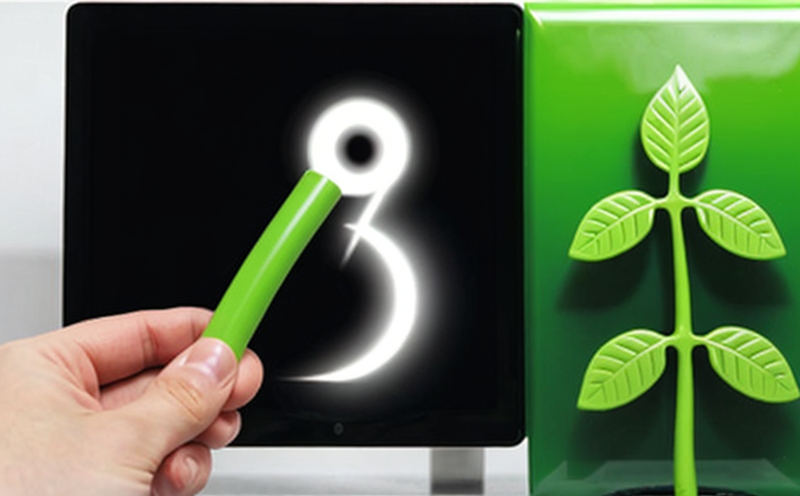ISO 50008 Energy Performance Monitoring Guidelines
The ISO 50008 standard is a cornerstone of energy efficiency and sustainability in buildings. It provides guidelines on how to monitor, measure, report, and verify the energy performance of facilities. This service focuses on helping organizations comply with this international standard by offering comprehensive testing solutions tailored to their specific needs.
The ISO 50008 guidelines emphasize the importance of continuous improvement in energy management systems (EnMS) through regular monitoring and verification. These practices are essential for achieving long-term sustainability goals, optimizing resource use, and reducing environmental impact. The standard applies across various sectors including commercial buildings, industrial facilities, schools, hospitals, and more.
Our team of experts ensures that your organization meets the stringent requirements set forth by ISO 50008. We offer a wide range of services from initial assessments to ongoing support ensuring continuous adherence to best practices in energy management.
To begin with, our specialists perform comprehensive audits to assess current energy consumption patterns within your facilities. This step helps identify areas where improvements can be made and sets baselines against which future performance will be measured.
Next comes the implementation phase where we design tailored strategies aimed at enhancing overall efficiency levels based on the findings from our initial audit. Our approach considers all aspects of building operations, including HVAC systems, lighting, power distribution networks, etc., ensuring a holistic view of potential savings opportunities.
After implementing these measures, continuous monitoring becomes crucial to track progress and ensure sustained performance improvements over time. We utilize advanced software tools capable of collecting real-time data from various sources within your facility, allowing for precise analysis and interpretation.
Finally, regular verification visits are conducted to confirm that all implemented changes continue to deliver expected results. During these visits, our experts review operational practices, check instrumentation calibration, verify energy savings claims, and provide recommendations for further optimization efforts.
The ISO 50008 guidelines also emphasize the importance of stakeholder involvement throughout this process. By engaging key personnel at every stage, we ensure that everyone understands their role in supporting sustainable practices within your organization.
| Monitoring Metrics | Description |
|---|---|
| Total Energy Consumption | The overall amount of electricity, gas, or other fuels used by the building over a specified period. |
| Peak Demand | The highest rate of energy consumption during any given hour within the monitored timeframe. |
| Energy Intensity | A measure comparing total energy use to some measure of output or activity level, such as square footage or occupants. |
By adhering closely to ISO 50008 standards and leveraging our expertise in energy performance monitoring, you can significantly enhance your organization's commitment to sustainability while realizing substantial cost savings associated with reduced utility bills.
Applied Standards
The ISO 50008 standard has been developed specifically for organizations looking to improve their energy management practices and reduce carbon footprints. It builds upon existing international standards such as ISO 50001, which provides a framework for managing energy resources efficiently.
ISO 50008 focuses on the practical aspects of implementing an effective EnMS by addressing topics like measurement strategies, data collection techniques, and reporting formats. This ensures that organizations have clear guidance on how to structure their monitoring programs effectively.
One key aspect highlighted in ISO 50008 is the concept of "energy use intensity" (EUI), which refers to the average amount of energy consumed per square foot or person served by a facility. By tracking EUI over time, organizations can identify trends and set targets for improvement.
Another important element discussed in ISO 50008 is the role of "key performance indicators" (KPIs) in assessing progress towards sustainability goals. KPIs help track key metrics such as energy consumption per unit output or cost savings achieved through efficiency initiatives.
Competitive Advantage and Market Impact
Leadership recognition: Organizations that comply with ISO 50008 standards demonstrate a commitment to sustainable practices, which can enhance their reputation among stakeholders including customers, employees, and investors.
Cost savings: By implementing the recommendations outlined in ISO 50008, businesses can achieve significant reductions in energy costs over time. This translates into increased profitability and improved financial health.
Regulatory compliance: Many jurisdictions are adopting regulations requiring organizations to meet certain energy performance criteria. Compliance with ISO 50008 helps ensure that your business remains compliant without facing penalties or fines.
Increased market share: In today's competitive landscape, companies known for their environmental stewardship often attract more customers who prioritize eco-friendly products and services.
These advantages not only benefit individual organizations but also contribute positively to the broader market by driving demand for sustainable solutions and inspiring other businesses to follow suit.
Use Cases and Application Examples
The ISO 50008 guidelines find application in numerous scenarios within various sectors. Here are some illustrative examples:
| Scenario | Description |
|---|---|
| Data Center Optimization | Monitoring energy usage patterns helps identify inefficiencies in cooling systems, lighting, and other infrastructure components. |
| Commercial Office Buildings | Implementing smart building technologies allows for real-time adjustments to HVAC settings based on occupancy levels, maximizing comfort while minimizing waste. |
| Schools & Hospitals | Ensuring optimal energy consumption in classrooms and patient care areas enhances learning environments or treatment processes while reducing operational expenses. |
| Industrial Facilities | Continuous monitoring enables identification of bottlenecks in production lines, leading to improved productivity and lower maintenance costs. |
In all these cases, the focus remains on achieving measurable improvements in energy performance through systematic evaluation and strategic interventions guided by ISO 50008 principles.





